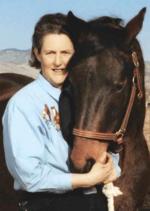The Design Process, Autism and Animals
Temple Grandin
Wednesday, 18 Oct 2006 at 8:00 pm – Sun Room, Memorial Union
Temple Grandin is a professor of animal science at Colorado State University. She designs humane livestock handling facilities, and has done extensive research on cattle temperament, environmental enrichment for pigs, reducing dark cutters and bruises, bull fertility, training procedures, and effective stunning methods for cattle and pigs at meat plants. She has also developed an objective scoring system forassessing handling of cattle and pigs at meat plants, which is being used by many large corporations to improve animal welfare. Her history as a person with autism has given her insights into animal thinking that ordinary people do not share. As a person with autism, she describes the unique way her visual mind works and how she first made the connection between her autism and animal temperament in her book Thinking in Pictures. InAnimals in Translation, she explores the connection between autism
and animal behavior.
Cosponsored By:
- Animal Science & National Disease Lab
- Buena Vista University
- College of Design
- ISU Human Resource Services
- Committee on Lectures (funded by Student Government)
Stay for the entire event, including the brief question-and-answer session that follows the formal presentation. Most events run 75 minutes.
Sign-ins are after the event concludes. For lectures in the Memorial Union, go to the information desk in the Main Lounge. In other academic buildings, look for signage outside the auditorium.
Lecture Etiquette
- Stay for the entire lecture and the brief audience Q&A. If a student needs to leave early, he or she should sit near the back and exit discreetly.
- Do not bring food or uncovered drinks into the lecture.
- Check with Lectures staff before taking photographs or recording any portion of the event. There are often restrictions. Cell phones, tablets and laptops may be used to take notes or for class assignments.
- Keep questions or comments brief and concise to allow as many as possible.




